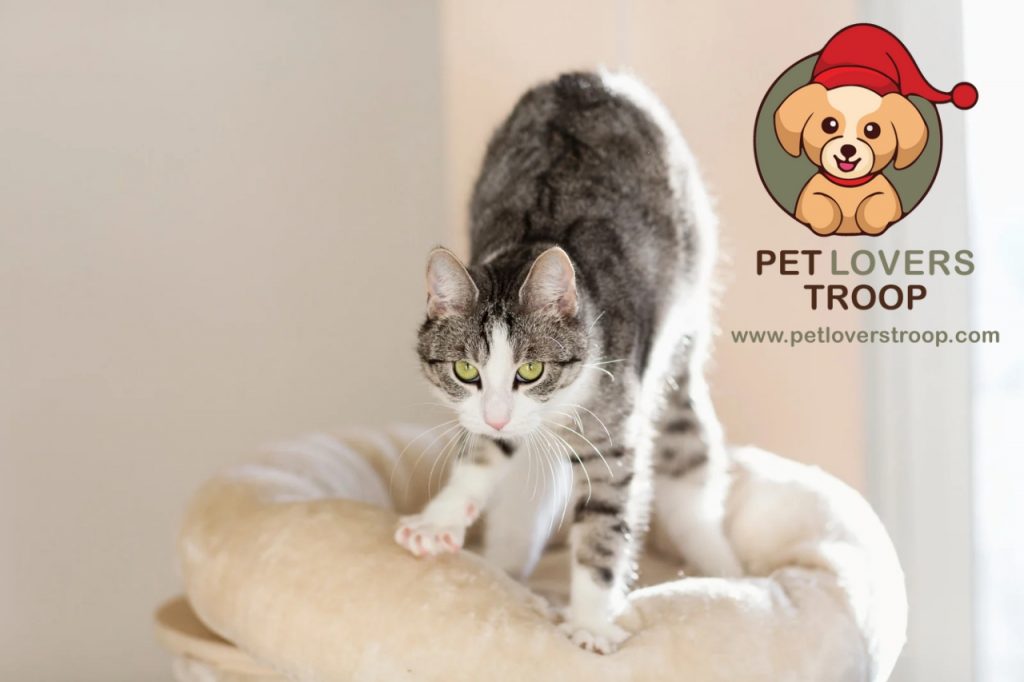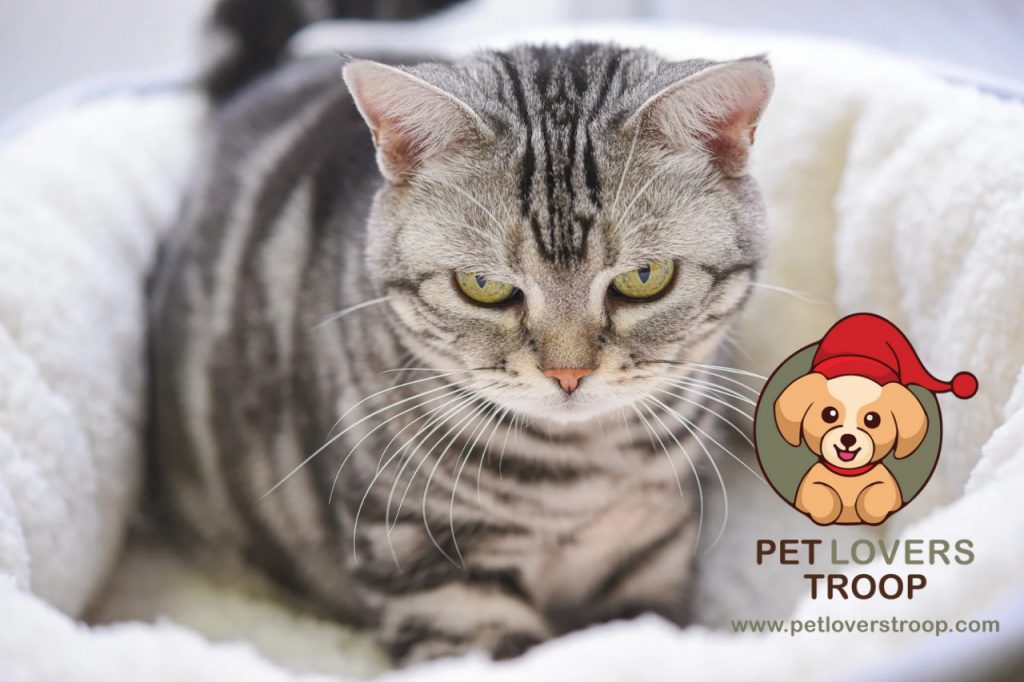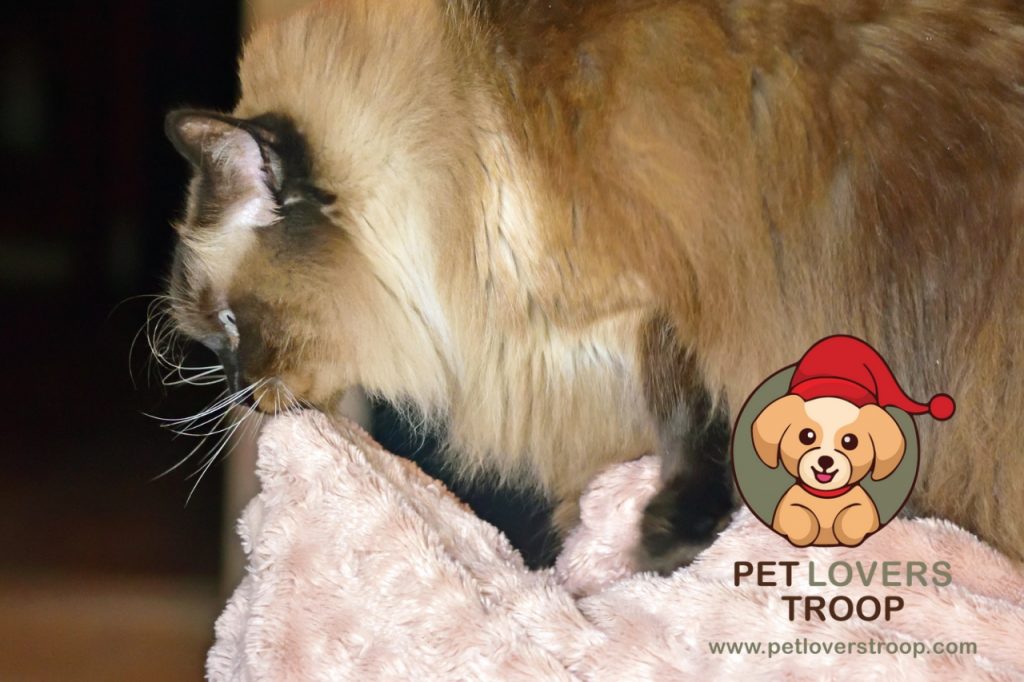If you have a cat, chances are you’ve witnessed the adorable and somewhat puzzling act of kneading. This quirky and instinctual habit, often accompanied by purring or even drooling, can leave many pet owners curious. What is it about this rhythmic motion that captivates cats and melts our hearts?
When cats place their paws rhythmically against soft objects they perform an act known as “making biscuits.” But why do cats do this? In this blog, we will explore the interesting explanations regarding this natural behaviour alongside insights that help you understand your pet cat better.

What Is Cat Kneading?
Cat kneading emerges naturally from a built-in instinct. The behaviour involves front paw repeated movements while pressing against soft items including blankets and cushions or your lap. Kneading cats release purrs yet both physical touching with claws and slight drooling behave differently between individual cats.
Check out: 8 Reasons Why Cats Love Bathrooms
Despite these variations, the action remains the same: Their rhythmic back-and-forth movements produce an action that tends to puzzle humans. The instinct can appear initially in kittens and then persist throughout their lifetime. When cats knead objects, including cosy blankets and sweaters viewers get insight into their intricate and puzzling instinctive behaviours.
Why Do Cats Knead?
Cats present kneading behaviours for many reasons, some essential functions include comfort and territorial marking. Learning about these reasons will assist your efforts to form stronger bonds with your feline friend.
Know more about: Cat Crazy Moments: Unraveling the Mystery of Your Feline’s Wild Antics
1. Comfort and Contentment
The milking behaviour which kittens perform on their mother’s breasts after nursing results from instinctive stomach touches known as kneading. Cats developing the habit of kneading during kittenhood lead to a sense of security which tends to stay with them as they venture into adult life.
Your cat probably touches their paws on furniture to recreate soothing steps that offer feelings of comfort and safety. Your cat feels both comfortable and happy when they knead your lap because they trust you to provide them with a secure space.
Have a look at: A Guide on Cat Language and Signals
2. Marking Territory
Comparatively few people understand that cats employ scent glands located in their paws for communication. Through kneading motions, their pheromones get released by directional glands to indicate their dominance.
Your cat signals ownership of you when they knead your body, along with your objects. To convey, “You belong to me” in the most cute way your pet releases their scent through kneading motions.
3. Preparing a Nest
When cats inhabit natural habitats they use their paws to gently crush vegetation for building bedding spaces. The natural kitty instinct to knead plants for a nest exists inside household cats because they naturally knead before settling down.
Read more on: Why Do Cat Eyes Glow in the Dark? The Science Behind Their Shine
When your cat begins kneading your couch or flopping onto a pillow it might be their methodology to create an enjoyable resting surface.
4. Stress Relief
My feline friend knits their paws when they appear anxious so why do they do that? The soothing power of bodily movements explains. Through kneading your cat achieves relaxation that produces a peaceful state of mind.
The kneading behaviour provides cats with the same tension-reducing benefits that stress balls and foot tapping deliver to humans.
Check out: Unveiling the Unique Personality Traits of Persian Cats: A Comprehensive Guide to Care
5. Sign of Affection
Your cat kneading your body indicates the animal feels both safe with you and loves you at that moment. From when they were kittens their kneading behavior tells you they trust you as their source of comfort. It’s their way of bonding and expressing affection.

Why do Some Cats Knead More than Others?
The habit of kneading among cats varies widely because it occurs naturally. Notable cat breeds demonstrate either permanent comportment of kneading or graduation beyond the kitten stage.
Affects from personality traits and childhood experiences together with emotional state will determine if your cat will knead. This natural behaviour runs deep in the feline genetic make-up of cats.
Have a look at: The Science Behind Cat Meowing: What Your Feline Friend Is Trying to Tell You
The kneading behaviour appears often among Ragdolls together with Maine Coons, since these breeds retain innate tendencies for affection. Cats form strong attachments to their mother during youth and often develop this nurturing instinct during their adult life. Your cat’s kneading behaviour provides insight into its character traits as well as its emotional requirements.
How to Handle Cat Kneading?
The handling of cat kneading presents occasional difficulty yet requires patient behaviour from the cat owner. Your cat shows love and comfort through this natural behaviour.
1. Protect Yourself from Claws
Cats who knead with their claws exposed create painful sensations when they do it. When hugging your cat arrange a thick blanket across your lap as protection from their potential claws.
Check out: Why Do Cats Knead?
Frequent nail trims for your cat will help decrease their discomfort level. Teaching your cat to use a scratching post will preserve their nails’ condition and stop them from hurting you with their claws during the kneading process.
2. Provide a Kneading Spot
Lead your cat to develop kneading actions exclusively on a certain blanket or cushion. Having a specific soothing zone gives your cat a dedicated area to stretch their natural behaviours without damaging your furniture. Whenever possible select fabrics that feel good to your cat then place them in their preferred locations.
3. Never Punish your Cat
Kneading operates as a deeply rooted natural behaviour which also demonstrates affection. Your cat will become scared and anxious when you rebuke him for kneading behaviour.
Know more about: Eclipse Safety for Cats: How to Keep Your Furry Friends Safe
You should guide their focus toward suitable surfaces when necessary. Reward your cat with treats combined with constructive positive feedback that shows them appropriate kneading locations.
4. Use Distraction Techniques
When kneading behaviour appears overwhelming it becomes too disruptive for your cat simply give him interactive toys to distract him. When cats knead to obtain attention they will usually stop if you provide playful activities which fulfill their social needs thus minimizing excessive kneading.
5. Observe for Underlying Issues
Excessive kneading from your cat could signal that they are under stress or experiencing some form of body distress. Through observation check your cat for general behavioral and medical health signs.
Check out: Why Does My Cat Lick Me? What It Means and How to Respond
A veterinarian’s consultation becomes necessary when kneading behaviour prompts concern about either medical conditions or behaviour problems. Your cat uses kneading to show both comfort and affection toward you.
My Cat Kneads Excessively – Should I be Worried?
Excessive cat kneading normally just causes minor discomfort for pets however sometimes it becomes a symptom of anxiety stress and physical pain and requires veterinary assessment.
Kneading that turns into a frequent pattern or compulsion should lead you to schedule a visit with your veterinarian. Medical or behavioural problems can be eliminated through a veterinarian examination which will provide solutions to improve your cat’s comfort level.
Have a look at: Cat Love and Loyalty: How Cats Choose Their Favorite Person
When your cat spends too much time kneading it means they aim to comfort themselves at a time of adjustment such as house relocation or creating a new friendship with another cat or pet.
By watching your pet’s complete behavior you can gain insights into their health status through changes in their feeding habits or lifestyle habits. Early identification of these problems helps keep your cat both healthy and content
Fun Facts about Cat Kneading
- A few cats both drool and produce loud purring noises when they knead as a clear indicator of their happiness.
- Together with a later explanation of the process of bread preparation lies the origin of “making biscuits” terminology used to describe cat kneading.
- The kneading behaviour may arrive in such a trance-like state that your cat enters into deep relaxation and exceeds happiness.
- Every cat picks different approaches to kneading since some use front paws yet others use their full set of paws as an exciting demonstration.
- Through the hormone release mechanism, both cats and humans experience relaxation from this delightful behavior.
- Cats display increased kneading frequency at specific seasonal points or when they display heightened affectionate moods and require warmth.
- A cat’s natural manoeuvre of kneading serves as a distinctive indication of personality traits because tight-knit more adventurous cats tend to knead forcefully yet bashful cats showcase gentle kneading actions.
Read more: Cat Crazy Moments: Unraveling the Mystery of Your Feline’s Wild Antics
Conclusion
Now that you know the answer to “Why does my cat knead?“, you can better appreciate this endearing behaviour. Whether it’s a sign of affection, a way to mark territory, or simply a stress-relief mechanism, kneading is a natural and instinctive action that speaks volumes about your cat’s feelings.
The next time your cat kneads your lap, remember: Your cat uses kneading behaviour as their method for showing they love and faith in you. When your kitty recks your lap open with love you can sweep away stress with a blanket so enjoy this unforgettable way they give affection. Shipping each knead to your lap confirms the unique connection you share with your furry friend.

Frequently Asked Questions about Cat Kneading
1. Why does my cat knead on my chest or stomach?
A: Cats knead on their owners as a way to show affection and comfort. It’s a behaviour that reminds them of the security they felt as kittens with their mother.
2. Is cat kneading a sign of happiness?
A: Yes, kneading is often associated with contentment and relaxation. A cat kneading while purring is a clear sign they feel happy and secure in their environment.
3. Can I stop my cat from kneading furniture?
A: While you can’t completely stop kneading, you can redirect it to a designated blanket or cushion. Providing appropriate alternatives will protect your furniture and still allow your cat to express their natural instincts.
